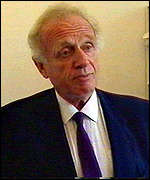 Arthur Hamilton Crisp is responsible for much of the medical community’s understanding of anorexia nervosa. At the youthful age of 37 he was appointed Professor of Psychiatry and chairman of the Department of Mental Health Sciences at St George’s Hospital. While at St George’s, he led the department to arguably become the best in London. He had a broad clinical approach, embracing biological, psychological and social aspects to develop treatments, combining both pharmacology and psychotherapy. His humanist approach greatly influenced a generation of psychiatrists; he was a rousing teacher, inspiring many of his students to following in his footsteps and specialise in psychiatry.
Arthur Hamilton Crisp is responsible for much of the medical community’s understanding of anorexia nervosa. At the youthful age of 37 he was appointed Professor of Psychiatry and chairman of the Department of Mental Health Sciences at St George’s Hospital. While at St George’s, he led the department to arguably become the best in London. He had a broad clinical approach, embracing biological, psychological and social aspects to develop treatments, combining both pharmacology and psychotherapy. His humanist approach greatly influenced a generation of psychiatrists; he was a rousing teacher, inspiring many of his students to following in his footsteps and specialise in psychiatry.
Psychosomatic approach to disease
Crisp defined the core feature of anorexia nervosa as being a “fear or avoidance of normal body weight” and used this example to highlight the psychosomatic approach to disease. He investigated the psychosomatic aspect of several conditions including heart attacks, irritable bowel disease, obesity, migraines and the installation of cardiac pacemakers.
Crisp was appointed as chairman of the education committee of the General Medical Council. During this time he expanded the medical curriculum to include both psychology and sociology. Despite retiring, Arthur Crisp continued championing his cause to reduce the stigma of mental illness, directing a five-year campaign by the Royal College of Psychiatrists.
The Arthur Crisp High Dependency Unit (HDU) launched by South West London and St George's Mental Health NHS Trust (SWLSTG) is one of only four NHS high-dependency inpatient units in the country. These units ensure that patients suffering with eating disorders have all the physical and therapeutic care they need in one place.